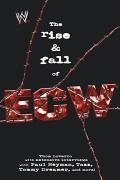As the person responsible for booking -- who was going to wrestle and who was going to win -- Heyman dared to break with tradition. Rather than relying on local talent and down-and-out veterans to draw in crowds, he created new characters and story lines that would appeal to the core wrestling fans: eighteen- to twenty-four- year-old men. Paul also realized that to persuade them to come, you had to get their interest and keep it. You had to offer the fans more than just the match. ECW became known for the interview, the shoot. Heyman got to know each wrestler's style, and in their interviews he would encourage them to speak from their hearts. When it came to the matches, ECW broke even farther from the mainstream. Tables, ladders, chairs, barbed wire, and even frying pans were used with abandon. Wrestlers not wanting to be topped put their bodies on the line, taking ever greater risks, daring to jump, leap, and fall from places never tried before. ECW matches became the stuff of legend.
Word spread as savvy wrestling fans began talking about the promotion and exchanging tapes. To keep the buzz building, wrestlers used the age-old trick of taunting the fans, and ECW fans responded in kind. By including the fans in the shows, ECW attracted a rabid, cult-like following that is still going strong today.
For nearly a decade, ECW redefined professional wrestling with a reckless, brutal, death-defying, and often bloody style that became synonymous with "hardcore." Through extensive interviews with former ECW talent and management -- Paul Heyman, Mick Foley, Tazz, Tommy Dreamer, Rob Van Dam, and many more -- The Rise & Fall of ECW reveals what made this upstart company from Philadelphia great -- and what ultimately led to its demise.
Dieser Download kann aus rechtlichen Gründen nur mit Rechnungsadresse in A, B, BG, CY, CZ, D, DK, EW, E, FIN, F, GR, HR, H, I, LT, L, LR, M, NL, PL, P, R, S, SLO, SK ausgeliefert werden.


